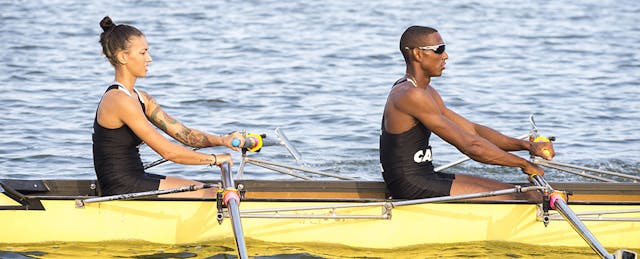The concept of integrating virtual reality and edtech products into the classrooms can be daunting for the average educator. How do you integrate effectively when you can’t predict the outcome—or know what you’re looking for?
But in the Greater Pittsburgh Region, a strategic partnership has been created to introduce new and emerging educational technologies into the classroom, supplementing teaching methodology with guided practice for students and detailed progress reports for teachers.
In August 2015, Carnegie Mellon University and Montour School District formalized a partnership called the “CMU LearnLab at Montour.” This on-campus research center, housed in a classroom at Montour High School, was designed to advance K-12 educational research by providing the latest advances in the science of learning and edtech. The CMU LearnLab at Montour brings together K-12 classroom teachers and university researchers for research collaborations, introducing evidence-based education technologies into the classroom, and taking science and mathematics instruction to the next level.
Let’s take a peek inside at how this partnership is bridging the gap between edtech research and classroom practice—making teachers more effective than ever before.
Bringing Virtual Reality Experiences into Science Classrooms
Integrating VR and simulations in the classroom isn’t easy. How do you design a lesson around it? Nesra Yannier, PhD candidate at Carnegie Mellon University’s Human-Computer Interaction Institute, has a few ideas—and knows how to bring personalized learning into the mix.
NoRILLA (Novel Research-Based Intelligent Lifelong Learning Apparatus), which founder Yannier developed, is a mixed-reality educational system that bridges physical and virtual education to improve children's science learning and enjoyment. The system uses an in-depth camera and a specialized algorithm to give interactive personalized feedback to children as they experiment and make discoveries in their physical environment.
Through the support of The Sprout Fund’s Educational Technology Refinery Grant, Montour is conducting a study with Yannier. This study is designed to discover if second graders learn early physics principles better when interactively predicting and observing experimental comparisons on a physical earthquake simulation—rather than when seeing a video of the same.
But how does this help teachers? Let’s consider another example. Students in Tina Frank's College High School (CHS) Chemistry course participated in a Chemistry Virtual Lab that showed significant learning gains. The research study consisted of online activities designed to help students apply chemistry knowledge in authentic contexts. At the end of the two-week study, a detailed report (analyzed student by student) assessing different skill levels was provided. Thus, the report enabled Ms. Frank to modify classroom instruction based on which topics students found challenging—or had already mastered.
Acquiring New Data While Piloting New Math Technologies
Science wasn’t the only space where new forms of data—and subsequent instructional implications—came out of these partnerships. In another study at Montour’s David E. Williams Middle School, students in Dana Rongaus’ 5th grade classroom helped pilot a software called the Fraction Tutor. Students had to collaborate with a partner in order to learn the fraction skills involving operations (addition and subtraction), as well as comparing fractions, finding the least common denominator (LCD), and finding equivalent fractions.
While students were working on the Fraction Tutor, the researchers captured streamed webcam data of the students’ work, their facial expressions, and their audio. Their “conceptual fraction knowledge” scores (being able to identify other students’ errors) increased from a 30% to a 98%. “It was the collaboration component that I enjoyed the most, as I heard rich conversations taking place with partners, as well as the implementation of problem solving strategies,” said Ms. Rongaus.
Why All This Effort for a Partnership?
In the course of normal teaching, a classroom teacher will try different things in what is essentially an experiment. But through this partnership between university researchers and public school educators, we are able to formalize the research, validate the results, and make it a more integral part of teacher PD. After all, Montour teachers have action research projects (what ASCD describes as teachers experimenting in the classroom) linked to Montour’s evaluation process, so as more Montour teachers become interested in incorporating research, the CMU LearnLab will be available to the district for consultations.
But at the end of the day, this isn’t just about Montour. This collaboration can be a model for other district/university partnerships, as well. “Our experience partnering with Montour school district has been amazing. We have introduced educational technologies that have been validated by cutting edge research to numerous classrooms, ranging from fifth grade math to high school chemistry,” shares Dr. Ran Liu, post-doc fellow at CMU. “The CMU LearnLab at Montour partnership is paving the way to closing the gap between edtech research and classroom use.”
Teachers shouldn’t have to engage experiment alone. Researchers shouldn’t have to make assumptions about the classroom. Why not try out a partnership in your own district—and close that gap?


